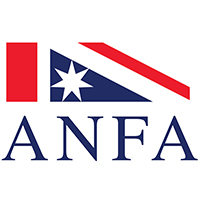An Extract from the Melbourne Age on 4th September 1901
At the exhibition Building yesterday afternoon the Countess of Hopetoun formally opened the Commonwealth Flag and Seal Exhibition and announced the names of the successful competitors.
The event was timed for 2:30pm and at that hour a large number of people had assembled about the entrances, attracted by the absolutely unique occasion. Among those present were a goodly sprinkling of legislators, both Federal and State, and a number of clergymen of various denominations.
As Lady Hopetoun entered, a huge Blue Ensign with the prize design of the Southern Cross and a six pointed star thereon was run up to the top of the flagstaff on the dome and breaking, streamed out on the heavy south-westerly breeze, a brave and inspiring picture.
On entering the rooms reserved for the thousands of designs which go to make up the exhibition, the beholders were almost dazzled by the polychromatic spectacle which greeted their eyes. Every conceivable and inconceivable combination of colours flared from the walls which were spread from top to bottom with the artistic, in-artistic and, in many instances, weird designs sent in, and for a few minutes the feeling was truly overpowering. After making a brief inspection of the principle designs which had been awarded prizes or honourable mention, Lady Hopetoun seated herself at the prize table.
The Prime Minister rose and said the Countess of Hopetoun had kindly consented to open the Exhibitions, but before doing so wanted him to explain how the competition had come about and how it had resulted. With regard to the flags, he read the following letter from the judges.
Melbourne 2nd September
Sir,
Attracted by the loyalty and sentiment of the Australian people as represented by the 30,000 designs for a national flag, the great majority of which contain the Union Jack and Southern Cross. It was felt that the only additional emblem was one representing the Federation of the 6 States. This was supplied by various forms such as coloured bars, shields, devices, stars, figures, letters, animals etc. introduced in various forms, colours and positions on the various designs.
Having carefully examined every exhibit with due regard to history, heraldry, blazonry, distinctiveness, utility and cost of making it up in bunting, it was apparent that a Commonwealth Flag, to be representative, should contain –
- The Union Jack on a blue or red ground.
- A six pointed star, representing the federated States of Australia, immediately underneath the Union Jack and pointing directly to the centre of the St George’s Cross, in a size to occupy the major portion of one quarter of the Flag.
- The Southern Cross; in the fly, as indicative of the sentiment of the Australian nation.
Many designs were rejected as not being in accord with heraldry-borders around the Union Jack, contrary to the heraldry and blazonry of flags… crosses, coloured stars, stars too small to be seen at a distance, and otherwise faulty in design.
In conclusion we may state that our task was not an easy one, but our desire was to give the people of our new born nation a symbol that would be endearing and lasting in its effect, and with that end in view we hope that we have been successful.
On behalf of the judges –
JW Evans
JA Mitchell
